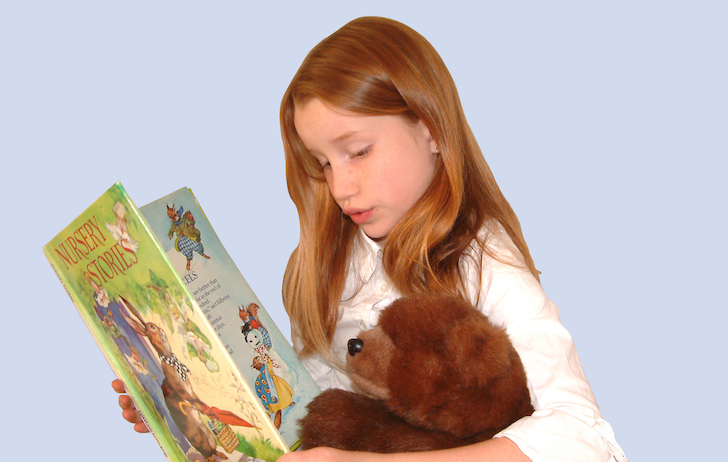How to Get a Children's Book Published
Do you have a children's book inside you waiting to get out? Have you written one and need to find a publisher? Here's what you need to know!

I receive questions about children's book publishing on a daily basis. While I can't cover every aspect of children's book publishing in one email, or one Web page, I'll do my best to cover the basics here, and point you towards the best sources of additional information.
This page is a work in progress. If you have information that you think I should add, please feel free to use this site's contact link to email me.
Finding a Publisher
The best place to start when looking for publishers who might be interested in your manuscript is the current edition of the Children's Writers and Illustrator's Market, published by Writers Digest, which lists many available markets for children's writers - from magazines and contests to book publishers. It also contains invaluable information on how to write a query letter, manuscript formatting, agents, and other tools to help you get your 'foot in the door.'
You can also use the Web to find and research suitable book publishers. Searching through publisher's Web sites will help you research the current market, and many book publishers also have guidelines for writers and illustrators on their sites.
When you're making your list of possible publishers, be picky. Don't assume every publisher will be interested in your title. Don't send a pre-school manuscript to a publisher that deals mainly with young adult titles. Do some research and narrow down the list to those that make the best match with your book.
What to Send
Each publisher will likely want a slightly different package. Some might want the entire manuscript, others prefer to receive only a query letter. Send each publisher only what their guidelines specify. Mailing a huge package to publishing houses that don't accept unsolicited manuscripts is a great way to waste money, and a lousy way to find a publisher.
Whatever you send, be sure it is neat and easy to read. Stay far, far away from fancy script fonts and unusual formatting. Manuscripts should be typed in a plain font, double-spaced, on standard letter size white paper, and sent to a specific editor or the Editorial Department of the publishing company you're submitting to.
Research
Time spent learning about the children's publishing industry will pay off tenfold when pitching your manuscript to publishers.
A good place to start is to join the Society of Children's Book Writers and Illustrators. Even if you don't join, find out if any SCBWI conferences or seminars are being held in your area. By attending those events, you will learn about the issues facing children's book publishers, and make contacts that may lead to a contract.
You should also pay attention to hot topics and trends in the industry. Pay attention to the Children's Book Bestsellers, and talk to booksellers and children's librarians about which books are popular. Knowing what's hot will help you present your own manuscript in an appealing light (if you can tie it in with a trend).
Rejection
If you've never been published before, you should be prepared for rejection. The vast majority of children's books published each year are written by previously published authors. That doesn't mean that there's no chance for new voices to be heard, but it does mean that you'll have to try a little harder, and be a little more persistent to get your first book published.
Don't take rejection letters personally. Try to learn from them. If you get a lot of form letters, perhaps you weren't targeted enough in your choice of publishers. If you receive a more personalized rejection letter, take the comments to heart. Don't hesitate to take another look at your manuscript to see if it can be improved in light of the comments you receive.
If you possess both talent and perseverance, you'll find a way to succeed.
Children's Book Illustration
If you're not a professional artist, don't try to illustrate your book yourself. If you don't have a particular illustrator in mind for your book, you don't need to find one before submitting your manuscript. Publishers often have illustrators they like to work with, and a filing cabinet full of the portfolios of many more that they can contact to illustrate your book if it's accepted.
If you're an illustrator without a story to tell, you can submit a color photocopies of two or three of your best works to the art directors of houses that might use artwork in your style. Don't give up after one mailing. If you haven't heard anything in six months, send out another package.
If you've never illustrated a book before, it might help to compare your work with some professional book illustrators to see if your work measures up. Again, with the right mix of talent and determination, you will be able to find a market for your work.
If you are both the author and the illustrator of your work, you might want to add a note to your package letting the publisher know that the story and artwork can be considered separately. That way you won't lose out if they love your story but not your illustrations, or vice versa.
Related Books
The Children's Writer's and Illustrator's Market
Order the current year's edition today!
The Complete Idiot's Guide to Writing for Young Adults
From the creator of the first course on Writing Children's Books for the renowned Gotham Writers Workshop.
You Can Write Children's Books
A good primer for beginners by Tracey E. Dils, faculty member of the Institute of Children's Literature.
The Writer's Guide to Crafting Stories for Children
(Write for kids library)
Read These Next
5 Free Tools to Convert Your Ebook to EPUB and Kindle Formats
When converting your manuscript into ebook formats for your own personal use or sale, there is no excuse for producing a poor quality, poorly formatted file. Free tools are available that can help you create a high-quality, validated ebook file in EPUB or Kinde Format 8 file types.
Reading Comprehension Increases with Audiobooks
Love of reading and reading comprehension go hand in hand, and audiobooks have proven to promote increased reading activity – and advance reading comprehension – something many people struggle with on a day to day basis.
10 Tips to Creating a Powerful Platform
Publicist Annie Jennings explains what a platform is, and why every author, especially non-fiction authors, should have one.






